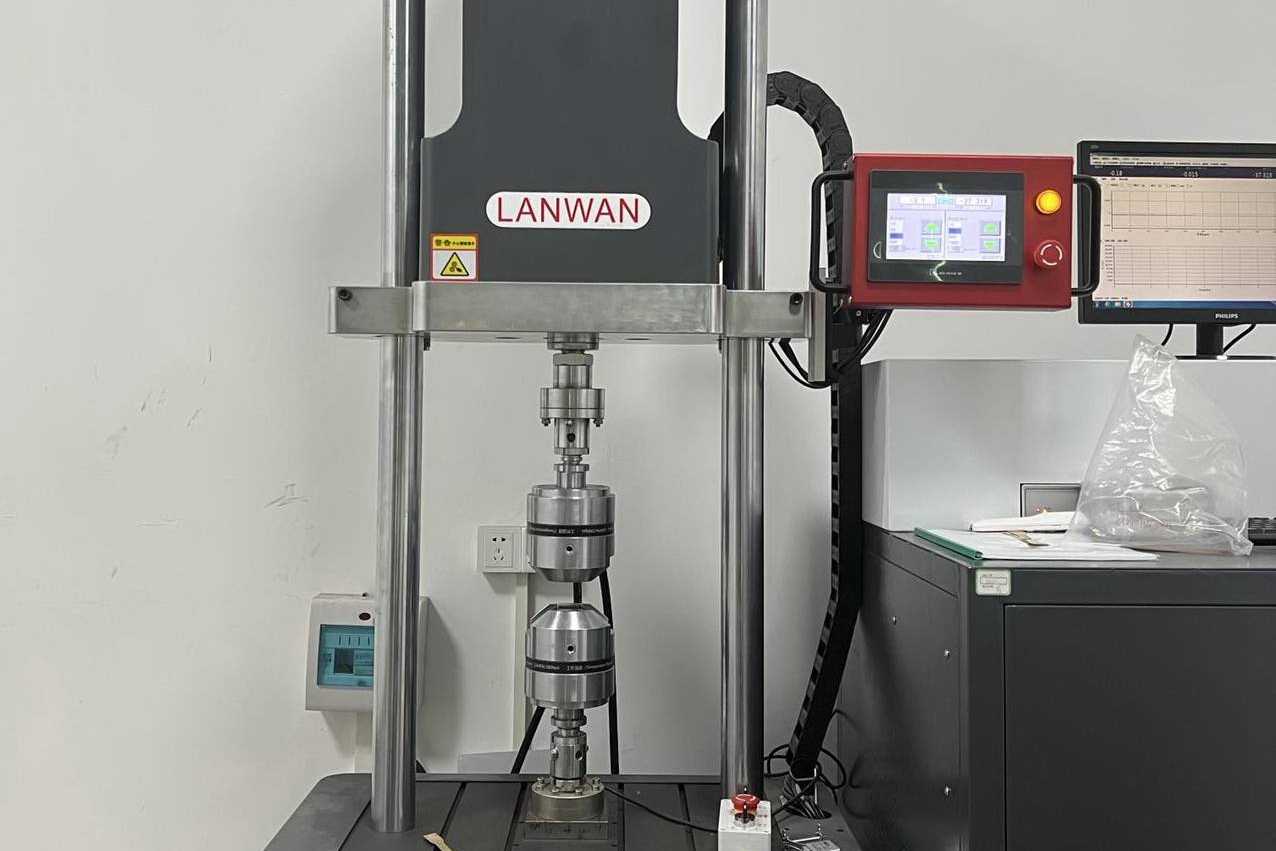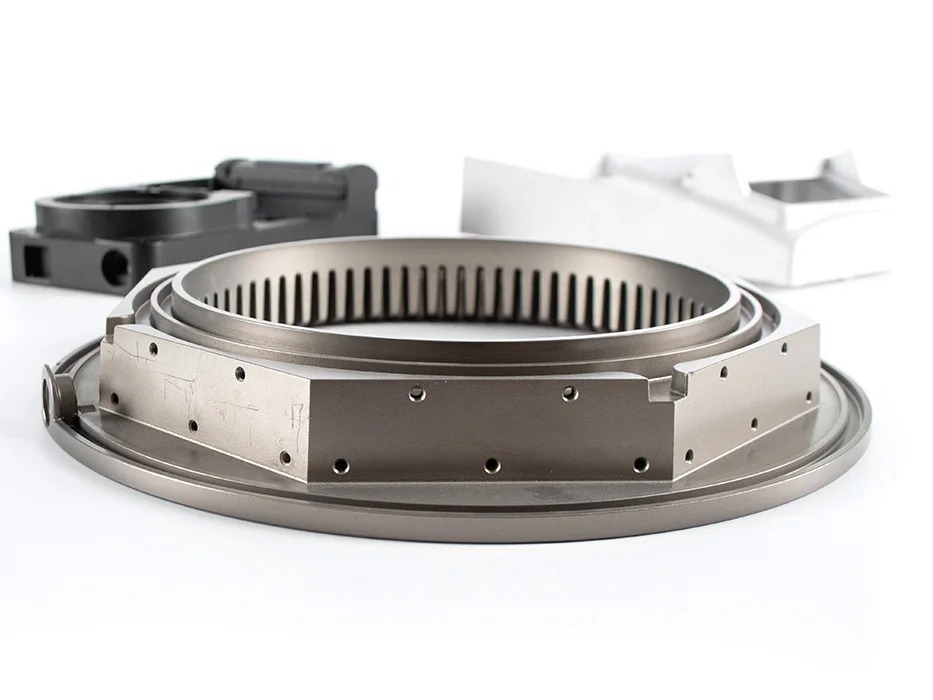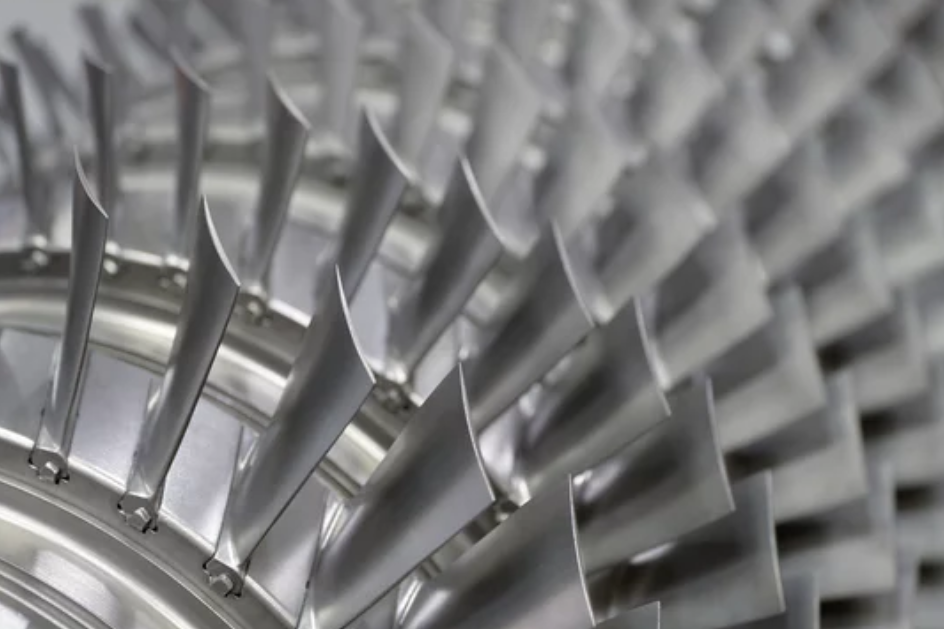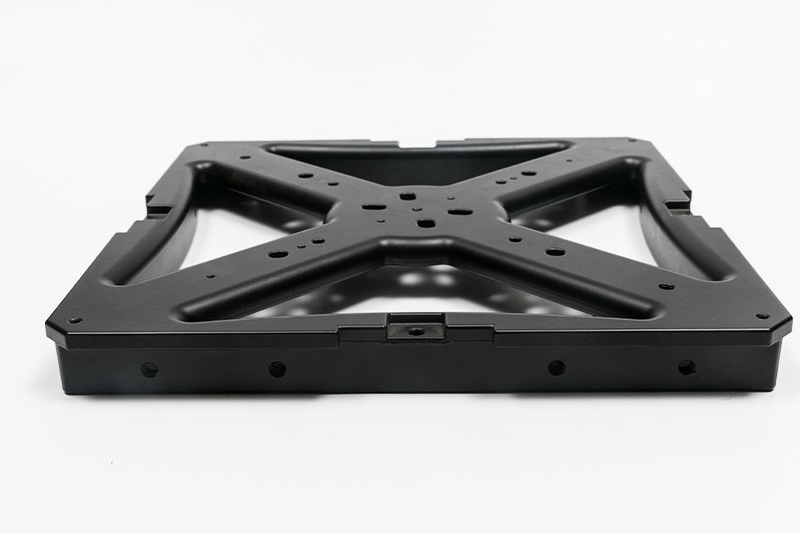Dynamic and Static Fatigue Tester for Structural Validation
Introduction
Fatigue failures remain a critical challenge in high-performance structural components, especially in sectors such as aerospace, automotive, and medical devices. Subtle cyclic stresses, often undetectable in static tests, can lead to catastrophic failure after repeated use. This underscores the importance of both dynamic and static fatigue testing as essential tools in predictive durability assessment.
In custom parts manufacturing, fatigue testing ensures that materials and geometries meet real-world operational demands. Whether validating the integrity of a titanium bone plate or an aluminum control arm, structural fatigue testing provides the quantitative data necessary for engineers to optimize design, material selection, and safety margins. This blog explores the mechanics, equipment, industrial applications, and benefits of fatigue testing, focusing on how it supports robust structural validation.

Fundamentals of Fatigue Testing
Understanding Material Fatigue Behavior
Material fatigue refers to the progressive and localized structural damage that occurs when a material is subjected to cyclic loading. Unlike static failure, which happens at once under maximum load, fatigue failure emerges over time due to stress repetition, often below the material's yield strength. For instance, high-cycle fatigue typically involves stress amplitudes below 50% of the ultimate tensile strength, with failures occurring after 10⁶ cycles or more.
Fatigue behavior depends on surface roughness, internal defects, stress concentration, and microstructural features. Engineers must evaluate these variables when selecting materials and part geometries for mission-critical applications. Understanding the S-N curve (stress vs. number of cycles) is central to fatigue life estimation.
Differentiating Between Static and Dynamic Fatigue
Static fatigue testing measures how materials deform or fail under a constant, sustained load. It is beneficial for brittle materials or components exposed to long-term mechanical stress without motion, such as load-bearing fixtures in structural assemblies.
In contrast, dynamic fatigue testing involves subjecting a component to cyclic loading that simulates real-world operational environments. It can be high-frequency (e.g., vibration testing at 100 Hz or more) or low-frequency to replicate slow, repetitive loads. Engineers use dynamic testing to detect early crack propagation, stiffness degradation, and other subcritical damage mechanisms.
Role of Fatigue Testers in Structural Validation
Modern fatigue testers are integrated systems capable of applying precise loads, monitoring real-time deformation, and logging failure data across millions of cycles. They support validation protocols in advanced prototyping, allowing engineers to simulate long-term usage quickly. This ensures that the structural integrity of components like brackets, medical implants, and rotating shafts is verified before full-scale production.
Testing Equipment and Methodology
Fatigue Tester Configuration
Modern fatigue testers are engineered for precision load application under controlled environmental and operational conditions. These machines typically consist of:
Servo-hydraulic or electromechanical load frames
Load cells (accuracy class 0.5 per ISO 7500-1)
Displacement transducers (LVDTs or extensometers)
Environmental chambers (for temperature and humidity simulation)
Software-controlled waveform generators
Standard configurations accommodate force ranges from 100 N to over 100 kN and frequencies from 0.1 Hz (quasi-static) to 100 Hz (high-frequency testing). Dynamic loading profiles can be sinusoidal, triangular, or custom-programmed based on service life conditions. Fixtures are designed to simulate boundary constraints accurately, ensuring representative stress distributions.
Advanced systems integrate closed-loop servo control, allowing precise force or displacement control during millions of cycles. The modularity of these systems enables their use across various industries, from medical implants to aerospace fasteners.
Data Collection and Monitoring
Data acquisition systems record critical performance indicators such as:
Load vs. cycle count (F-N curves)
Displacement or strain amplitude
Crack initiation and growth rate
Hysteresis loops for energy dissipation analysis
Cyclic stiffness degradation
Monitoring is typically conducted in real-time, with high-resolution sensors capturing changes as small as 0.1 µm. Engineers can define stopping conditions, such as a 5% stiffness drop or crack length exceeding a critical value, to ensure consistent failure criteria.
Most testers feature automated report generation, digital waveform storage, and integration with enterprise quality systems for traceability. These features support continuous quality improvement and design validation in environments where early detection of fatigue failure is mission-critical.
Application Scenarios Across Industries
Aerospace Structural Parts
Aerospace structures are subject to fluctuating aerodynamic loads during flight cycles, making fatigue life prediction a safety-critical requirement. Components such as fuselage frames, wing spars, and titanium fasteners must be validated against millions of loading cycles under representative conditions. Fatigue testers simulate pressurization cycles, turbulence-induced stresses, and landing impacts.
In this context, fatigue testing is aligned with ASTM E466 and ISO 1099 standards. Engineers validate design margins by performing high-cycle fatigue tests under axial, bending, or combined loading. Modern aerospace development cycles rely on accelerated fatigue testing of prototype structures to detect early-life cracks and evaluate structural redundancy.
Using aerospace validation protocols for these components ensures that fatigue failure is detected and prevented through improved design and material selection.
Automotive Suspension Components
Vehicle suspension systems, such as control arms, tie rods, and spring retainers, experience constant load variation due to road surface irregularities. Fatigue testers replicate these conditions through multi-axis loading or road-load data simulation. Typical testing involves 10⁵–10⁷ cycles at amplitudes up to 60% of the yield stress.
Dynamic fatigue testing in the automotive sector often integrates temperature cycling, salt spray environments, or corrosion fatigue to replicate actual service degradation. Engineers evaluate the crack initiation point, propagation direction, and fatigue limit to determine the part's expected life under various vehicle loading profiles.
This approach is widely used in the automotive industry, especially in structural component qualification and design validation stages.
Medical Implant Validation
Orthopedic implants—such as femoral stems, hip cups, and spinal fixation plates—must endure millions of loading cycles within the human body. ISO 7206-4, ISO 14879-1, and ASTM F1717 define such implants' static and dynamic fatigue protocols. These tests replicate compressive, torsional, or bending loads generated during walking, running, or lifting.
Fatigue testers with simulated body fluid chambers maintain physiological temperature and pH during testing. Medical device engineers assess crack growth, interface stability, and surface wear under clinically relevant conditions.
The medical device sector demands extremely low failure probabilities, and fatigue testing is integral to risk analysis, design validation, and regulatory approval processes.
Structural Testing Integration with Prototyping
In the era of iterative product development, integrating fatigue testing into early-stage prototyping accelerates validation and reduces the risk of late-stage failures. Structural prototypes, whether machined, cast, or additively manufactured, can be subjected to static and dynamic fatigue testing to simulate real-use stress conditions.
For example, a CNC-machined aluminum prototype of a robotic arm joint can undergo 10⁶ cyclic load cycles at ±20 Nm torque to validate design assumptions. Fatigue testing results reveal weak zones, stress concentrations, or surface finish-related issues that may not appear in basic static testing. Adjustments to geometry, material hardness, or processing techniques can be made before the final tooling investment.
Manufacturers eliminate guesswork by embedding structural testing into prototyping workflows and strengthening the link between simulation and physical performance. In some sectors, prototype fatigue testing is now a formal step in new product introduction (NPI), serving as a critical design gate before clinical or field trials.
Fatigue testers used during prototyping are typically modular and programmable, allowing the simulation of diverse loading scenarios. Engineers benefit from rapid feedback cycles, enabling multiple design iterations to be tested within a single project phase. This tight feedback loop dramatically improves time-to-market and verifies functional reliability well before volume production begins.
Surface Finish and Heat Treatment Impacts
Fatigue performance is closely linked to surface integrity and residual stress conditions, which are influenced by post-processing operations. Surface irregularities, micro-notches, and oxide scales can act as initiation sites for fatigue cracks, drastically reducing component life under cyclic stress.
A polished or shot-peened finish on high-stress components, such as turbine blades or orthopedic implants, can improve fatigue resistance by over 20%. In contrast, unpolished or as-cast surfaces can decrease fatigue strength due to increased roughness (Ra > 3.2 μm) and microstructural inconsistencies.
Post-machining treatments such as polishing or anodizing enhance aesthetics and functional performance under fatigue loading. Heat treatment processes—like quenching and tempering—optimize the internal grain structure and residual stress profiles to increase endurance limits. For example, normalized 4140 steel may achieve a fatigue strength of 400 MPa, but post-heat treatment, that value can rise to 600 MPa.
The interaction between finishing and fatigue behavior is especially critical in components subjected to dynamic bending or torsional loads. Optimized surface and thermal treatments can extend fatigue life by reducing initiation points and delaying crack propagation.
Testing Standards and Industrial Benchmarks
To ensure the reliability and comparability of fatigue test results, manufacturers must align with internationally recognized standards. The most commonly referenced are ASTM E466 for axial fatigue tests and ISO 1099 for rotating bending tests. These define specimen geometry, loading protocols, and failure criteria, ensuring repeatability across testing facilities.
For structural components in the aerospace sector, validation must comply with stricter aerospace standards, such as MIL-STD-1530 and FAA AC 25.571. These regulations often mandate extended fatigue testing across dynamic and static load profiles under elevated temperature and humidity conditions. For example, aluminum 7075-T6 components used in aircraft frames are usually fatigue tested to exceed 10⁷ cycles at stress amplitudes of 150–200 MPa.
On the other hand, automotive powertrain components commonly adhere to DIN 50100 and SAE J1099, ensuring durability under torsional, thermal, and multiaxial stresses. Tests often include combined axial-torsional cycles for heavy-duty parts to simulate in-field loading.
Structural fatigue validation must be aligned not only with industry standards but also with specific customer usage scenarios. Test planning must consider real-world factors such as load spectrum complexity, corrosion exposure, and service frequency to ensure that the parts perform reliably across their design life.
Case Study: High-Load Die Cast Component Validation
Background and Objectives
A tier-one electronics supplier required structural validation of a zinc-aluminum die-cast support bracket used in outdoor telecom enclosures. The part was expected to withstand fluctuating wind loads, vibration from equipment operation, and cyclic stress from temperature fluctuations. Expected service life: 15 years or 10⁷ load cycles. Key failure risks included fatigue crack initiation at sharp edges and degradation due to surface porosity.
Test Setup and Method
The test component, produced via zinc die casting, was subjected to sinusoidal dynamic loading at 25 Hz and a peak load of 3.2 kN. The test profile replicated daily wind gust-induced loads by IEC 60068-2-6. 1.2 million cycles were executed per sample, with five samples tested for failure or survival.
Specimens underwent pre-test surface inspection, dimensional checks, and post-test fracture analysis. Data acquisition included:
Real-time stiffness tracking
Crack length progression via digital image correlation (DIC)
Resonance frequency drop monitoring
Results and Engineering Actions
Three samples survived complete test cycles with less than a 2% stiffness drop. Two samples failed via fatigue crack initiation at a sharp rib radius, traced to localized porosity and insufficient draft angle. The team implemented minor design adjustments, including increased rib radii and revised gate placement during casting, reducing local void formation.
Follow-up testing confirmed complete compliance with the fatigue durability targets. The fatigue testing program validated the structural design and drove upstream process improvement in tool design and casting parameters.
Conclusion
Dynamic and static fatigue testing are foundational pillars in the structural validation of precision components. From aerospace frames to automotive suspensions and medical implants, fatigue behavior dictates long-term performance and safety. While static fatigue highlights time-dependent material deformation under constant load, dynamic fatigue exposes vulnerabilities that arise under repetitive operational stress.
Integrating fatigue testing early in the custom parts manufacturing process allows engineers to optimize geometry, materials, and processing routes with data-driven confidence. Whether in prototyping or full-scale production, fatigue testing supports predictive failure analysis and iterative design refinement. Furthermore, test results feed into finite element models, enhancing simulation accuracy for next-generation designs.
Fatigue testers are more than diagnostic tools—they are enablers of product reliability, regulatory compliance, and competitive advantage. As structural performance demands continue to rise, so will the role of advanced fatigue validation in ensuring functional excellence across diverse industries.



